If you’ve replaced brake pads, you might think you have the tools you need for any brake project. But, to replace or upgrade brake calipers, you need more tools than when replacing brake pads and rotors.
Let’s talk through the process.
- Gather all the tools you use to replace the pads and rotors.
- A jack and jack stand to safely raise and keep the vehicle raised. Hydraulic or electric is best. There are several types: two posts (professional), scissors, or rail jack.
- A lug wrench to remove and replace the lug nuts from the wheel/tire: air-powered, corded or cordless electric, or manual.
- Use sockets and a ratchet to remove the caliper from the suspension.
- You need a line wrench to remove the brake line from the top of the caliper before removing the caliper from the suspension. This slotted wrench can be slipped past the brake line but still have almost complete contact with the bleed nipple.
- FYI: Don’t hang a caliper from the brake line which can damage the line, requiring more parts, cost, and effort. Always support the caliper if it is still attached to the brake line.
- Have a line clamp or plug. Once you remove the brake line, use the line clamp or plug to keep the brake fluid from leaking out of the brake master cylinder, down the brake line, and onto the floor.
- A siphon line, vacuum pump, or turkey baster is helpful to remove some of the brake fluid if the brake master cylinder reservoir is full.
- A hammer will come in handy if the caliper has failed and has clamped the brake pads onto the rotor. Use it to remove the caliper from the vehicle.
- FYI: In this case, the rotor and pads may need to be replaced as well.
- Have pliers and screwdrivers on hand to remove the brake pad pins and retainers from the old caliper.
- FYI: Some vehicles may need Torx or Star sockets. If the rotor is part of the wheel hub, you might need oversize sockets to remove the hub from the spindle.
- A set of brake pad spreaders will provide enough space between new pads to mount a new caliper onto the rotor. It should be a snug fit as the pads will rest against the rotor.
- Use a vacuum pump to remove the air from the brake line and caliper when putting the caliper and brake line in place. Pull fluid from the master cylinder reservoir displacing air from the brake line and caliper.
- FYI: A simple hose attached to the bleed nipple will work. Ask a helper to push the brake pedal forcing fluid from the master cylinder and displacing the air in the caliper and brake line.
- Get a funnel and a liter or quart of the correct brake fluid to top off the reservoir as you bleed out the air. Do not let the master cylinder reservoir run out of fluid.
- FYI: Brake fluid. Use the proper fluid for your vehicle. The type of fluid can be found in the owner’s manual, stamped on the master cylinder cap, or on the internet.
About Goodyear Brakes
Goodyear Brakes manufactures premium quality brake bundles, calipers, rotors, brake pads and all the hardware required to successfully install brakes, all backed by a national warranty, decades of production experience and one of the best-known names in automotive excellence. The brake pads are manufactured in the USA using a proprietary green production process by a company with more than 50 years of experience in friction science. The Goodyear Brakes product line is available through Goodyear Brakes at Amazon, CarID, Buy Brakes and AutoAnything.
Goodyear (and Winged Foot Design) and Blimp Design are trademarks of The Goodyear Tire & Rubber Company used under license by FDP Virginia Inc., 1076 Airport Road, Tappahannock, VA 22560, USA. Copyright 2020 The Goodyear Tire & Rubber Company. Goodyear Brakes and FDP Virginia are not responsible for its products when they are subjected to improper applications, installation, or accident.
Blogs
What Tools are Required to Replace Brake Calipers
Resources If you’ve replaced brake pads, you might think you have the tools you need for any brake project. But, to replace or upgrade brake



